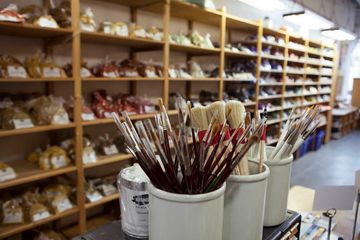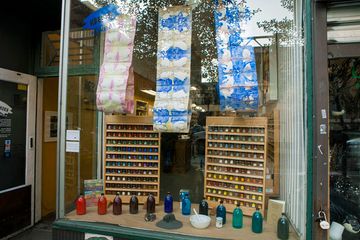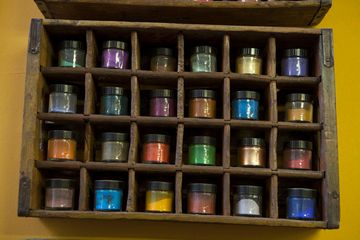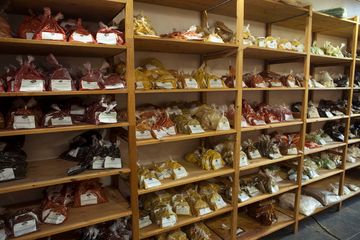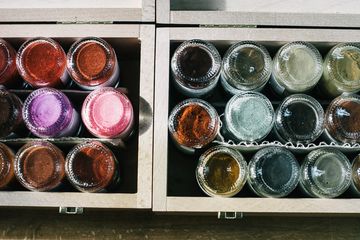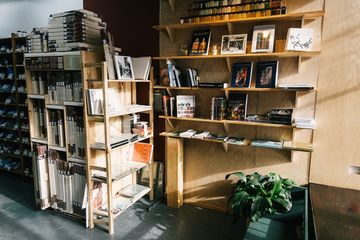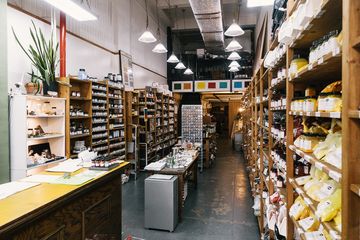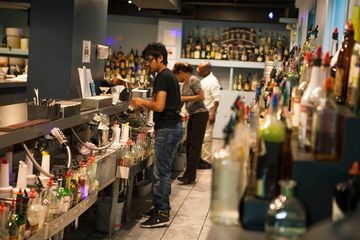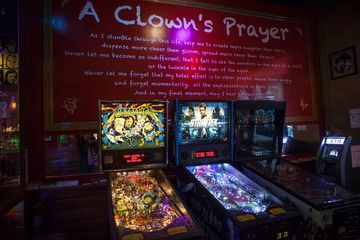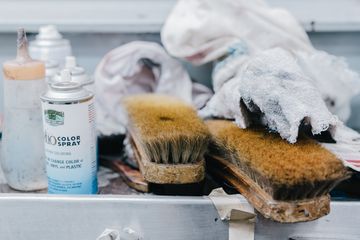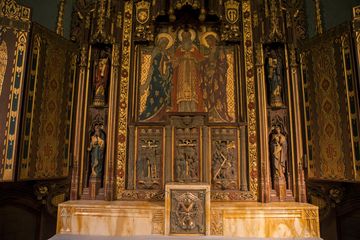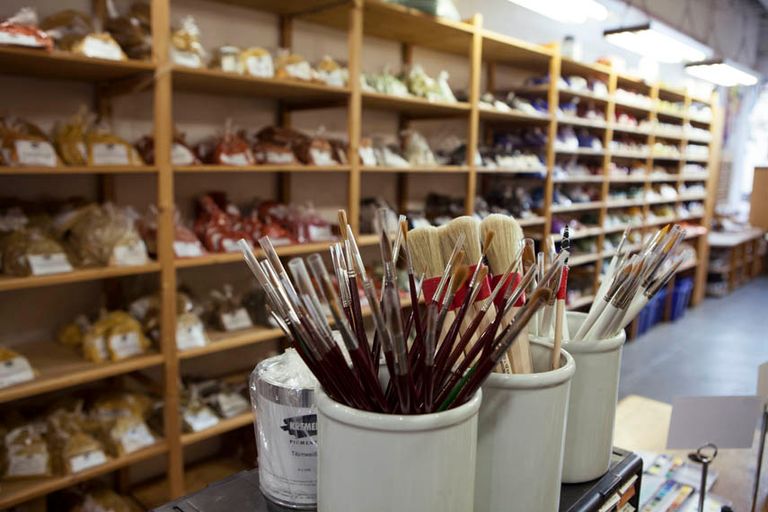
When Dr. Georg Kremer was a student in Germany studying chemistry, a painter friend of his could not find a particular historical pigment and approached Kremer about it. Digging through archives, Kremer found the recipe to make it (this was well before the advent of the internet), and brought this extinct pigment back to life. Realizing a void in the art world, Dr. Kremer began to recreate other old pigments. Today, he continues to work in his lab in Germany, but Manhattan is where he opened his shop. Kremer sells his raw materials for preservation and restoration of fine art, as well as pigments for those who wish to paint using more traditional techniques. The vivid colors that Kremer has devised come from precious and semiprecious stones. In my home, we grew up repeating the mantra that we learned from my mom, "any color as long as it is blue." Never have I seen as many magnificent shades of this color as I did at Kremer. Classes are taught on a regular basis for those who want to learn how to make their own paint. They provide the recipe and customers add their own "personal aesthetic."
